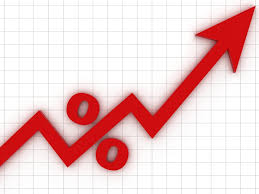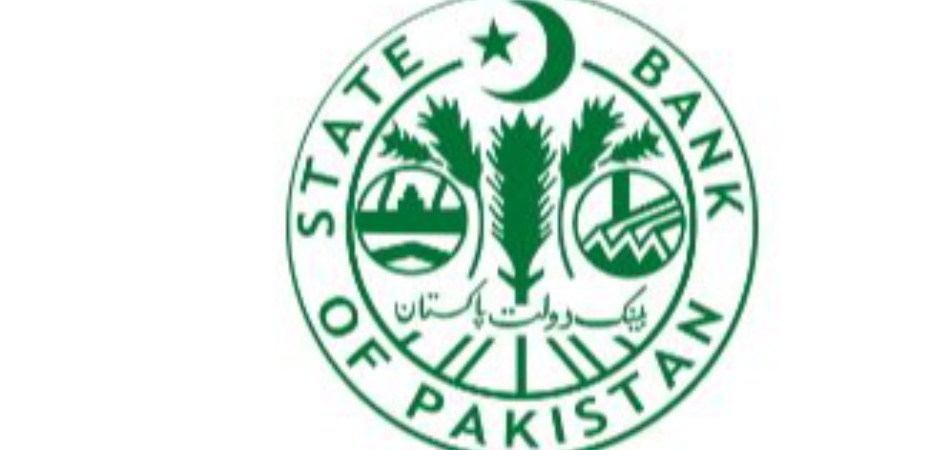MPS Preview: 3rd Covid wave to fade away rate hike

By MG News | March 18, 2021 at 09:54 PM GMT+05:00
March 18, 2021 (MLN): The State Bank of Pakistan (SBP)’s Monetary Policy Committee (MPC) is scheduled to convene on Friday, March 19, 2021, to announce Monetary Policy for the next two months.
To recall, the SBP has kept the policy rate unchanged for the past 9 months to support growth in the aftermath of covid-induced lockdown and meet the demand gap of the economy.
Providing forward guidance, SBP, in its last MPC meeting signaled that the current monetary policy is to remain intact in the near-term and maintained that the upside risk to inflation due to food prices and tariff hikes is unlikely to last long. SBP also highlighted that the recovery still remains at an early stage, despite improvement in private sector credit offtakes. The improved activity has triggered working capital requirements for some sectors; however, the scale remains lower than pre-pandemic levels.
While SBP sees no long-term impact of food price shocks to the inflation outlook in the last MPS, the recent hike in tariff and rising international oil prices may alter that view. Nevertheless, it is expected that SBP will adopt wait and see approach with a greater emphasis put on potential headwinds to economic recovery from rising COVID cases rather than near term higher inflation outlook.
Market Accord Remains Skewed Towards Status-quo
A survey of the financial market participants conducted by Mettis Global Pvt Limited revealed that market consensus on policy rate also hasn’t changed radically since the last monetary policy statement announced in Jan’21.
According to the survey, 93% of the total participants are of the view that the SBP will keep the policy rate at 7% in March’21 monetary policy announcement. In total, 7% of the respondents are expecting an increase in the policy rate.
Further bifurcation of this percentage shows that 6% of these participants expect a 50bps rate hike while the remaining 1% expect a hike of 25bps.
This shows that few prospects about the rate hike still there, considering that the negative real interest rate in March’21 may swell to 2.2% against the average negative real interest rate of 0.9% ever since monetary easing took place due to Covid-19 in the last 12 months. Moreover, Arif Habib Limited in its report also highlighted that the recent increase in yields on T-bills and PIBs suggests that some of the marker participants anticipate a rate hike in March’s policy announcement which led them to bid at a higher rate, hence resulting in an increase in the money market yields.
With regards to the impact of a rate hike on the stock market, 59% of the participants expect that if the MPC of the SBP unpredictably decides to increase policy rate in the range of 25-50bps, this will have a neutral impact on the stock market, while 41% of the respondents expect that a rate hike will have a negative impact on the market.
Going by the survey results, 90% of respondents are expecting a rate hike later in the year mainly due to rising inflationary pressures. As inflation is gaining steam and is likely to remain high in the next 6 months as per the analysts owing to hike in taxes and electricity tariff amid the resumption of the IMF program, rising international oil and commodity prices, this would compel SBP to increase interest rates. Of these 90%, 45% of the participants expects a cumulative hike between 50-100bps in CY2021, 28% has voted for a rate hike between 100-150 bps, 14% are expecting a total hike in the range of 25-50bps, while 3% see a hike in between 150-200bps in 2021.
Unpredictably, 10% of the participants expect no change in the policy rate during 2021.
Talking to Mettis Global News, Mr. Saad Khatri, Money Market Dealer at Faysal Bank said that over the last two months, supply-side factors continued to be the main reason driving inflation. Apart from electricity prices, food commodities prices also posed a mounting pressure on inflation. And there are chances of further increase as the resumption of the IMF program is expected in the next two weeks with the possibility of adjusting energy prices upwards. In addition, rising oil prices have yet to be passed on to consumers. Considering these factors, he expects SBP to increase policy rate in May’21
With regards to average inflation during FY21, the survey results show that 69% of the participants believe average inflation during FY21 will remain in line with SBP’s target, while 31% expect inflation will average higher than the range set by SBP.
External Account and Economic Recovery amid 3rd Covid Wave
On the external front, the position seems stable, as the current account, however, moved back into deficit from a surplus till Nov’20, it registered a surplus of USD 912 million during 7MFY21 compared to the deficit of USD 2,544 million. In the month of Jan’21, the current account deficit was down by 55% YoY to USD 229 million. while on monthly basis, the deficit was down by 65% mainly due to a 12% decline in total imports. SBP in its previous briefing hinted upon external account stability defining monetary policy course in the near term. In this regard, while increasing commodity prices pose risks to gains on the external front, potential inflows from IMF, Eurobond Issuance, remittances, FDI, and RDA balance such risks, a report by AKD Securities cited.
Moreover, it will also keep PKR stable. From FY21 to date, the rupee has appreciated around 8.1% against the dollar on the back of robust remittances and overall balance of payments position, as well as the build-up in SBP's foreign exchange reserves.
On the recovery front, the third covid wave which is now unfolding across Pakistan may pose threat to nascent recovery as its influence is expected to be much stronger due to a new variant from the United Kingdom that is more contagious. Recently, the government has reintroduced partial lockdowns in some parts of the country. However, the vaccine rollout process is gaining momentum, and will likely pave the way for a rapid economic recovery as Pakistan’s infection ratio is lower than other countries in the region. Furthermore, the growth in LSM output by 9.13% YoY in Jan’21 and 7.85% YoY in 7MFY21 further strengthening the case of rapid economic recovery.
Feedback on the growth outlook shows that 38% of the participant believe growth will remain cloudy amid the 3rd wave of COVID and tax and electricity hikes post-IMF Program, while 59% of the participants voted for steady growth, whereas 3% of the participants remained uncertain about the growth outlook.
Copyright Mettis Link News
Related News
| Name | Price/Vol | %Chg/NChg |
|---|---|---|
| KSE100 | 125,627.31 258.99M |
1.00% 1248.25 |
| ALLSHR | 78,584.71 1,142.41M |
1.16% 904.89 |
| KSE30 | 38,153.79 69.25M |
0.63% 238.06 |
| KMI30 | 184,886.50 91.38M |
0.01% 13.72 |
| KMIALLSHR | 53,763.81 554.57M |
0.54% 290.61 |
| BKTi | 31,921.68 33.15M |
1.78% 557.94 |
| OGTi | 27,773.98 9.65M |
-0.40% -112.21 |
| Symbol | Bid/Ask | High/Low |
|---|
| Name | Last | High/Low | Chg/%Chg |
|---|---|---|---|
| BITCOIN FUTURES | 108,055.00 | 109,565.00 107,195.00 |
570.00 0.53% |
| BRENT CRUDE | 66.64 | 67.20 65.92 |
-0.16 -0.24% |
| RICHARDS BAY COAL MONTHLY | 97.00 | 97.00 97.00 |
1.05 1.09% |
| ROTTERDAM COAL MONTHLY | 107.65 | 107.65 105.85 |
1.25 1.17% |
| USD RBD PALM OLEIN | 998.50 | 998.50 998.50 |
0.00 0.00% |
| CRUDE OIL - WTI | 64.97 | 65.82 64.50 |
-0.55 -0.84% |
| SUGAR #11 WORLD | 16.19 | 16.74 16.14 |
-0.52 -3.11% |
Chart of the Day
Latest News
Top 5 things to watch in this week
Pakistan Stock Movers
| Name | Last | Chg/%Chg |
|---|
| Name | Last | Chg/%Chg |
|---|








.jpg)